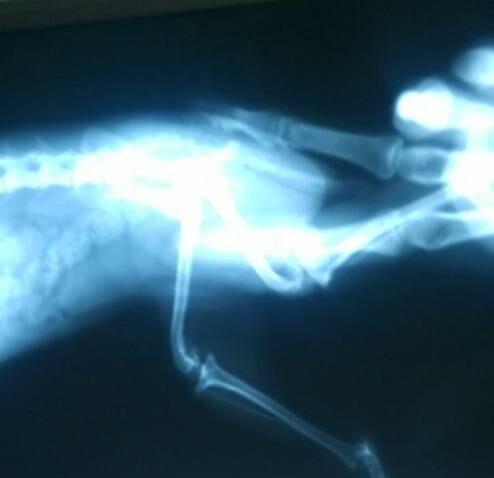1. Medial patellar dislocation
Medial patellar luxation is when the patella moves out of the trochlear groove.
Second, the characteristics of the disease
Medial patellar dislocation is more common in small dogs, such as Teddy and Poodle.
One of the most popular breeds: Teddy.
III. Clinical symptoms
The clinical manifestations are related to the degree of patellar dislocation.
Fourth, check
1. Physical examination
The inspection of medial patellar luxation is a general examination or found when the medial patellar dislocation is induced, depending on the degree of dislocation.
2. X check

Lateral radiograph, no obvious dislocation was observed.
A case of Teddy grade 4 medial patellar dislocation, 2 years old, frontal radiograph.
V. Treatment
1, conservative treatment: medial patellar dislocation can be conservative.
2. Surgical therapy: it is not effective for elderly dogs without symptoms, but effective for young dogs with lameness.
The main surgical treatments are: trochlear groove deepening, trochlear resection and tibial tuberosity transposition.
Trochlear groove deepening: The osteochondral wedge is removed from the patellar groove, the bone is removed from the incision, the trochlear groove is deepened, and the osteochondral wedge is reset.
Removal of the trochlear: remove the articular cartilage and bone, deepen the trochlear groove, make the medial and lateral edges parallel, and the base of the groove is perpendicular to the trochlear ridge.
Transposition of the tibial tuberosity: Incision of the skin from the fascia lata across the joint at the tibial tuberosity below the joint, reversion of the tibialis anterior muscle from the lateral tibial tuberosity, and reversion of the extensor digitorum longus tendon at the tibial plateau.
The patella is anchored in the trochlear groove by the use of the patellar declination plate
Patella cleat layer E-shape
VI. Prognosis
The prognosis is good after surgical correction according to orthopaedic mechanics.
